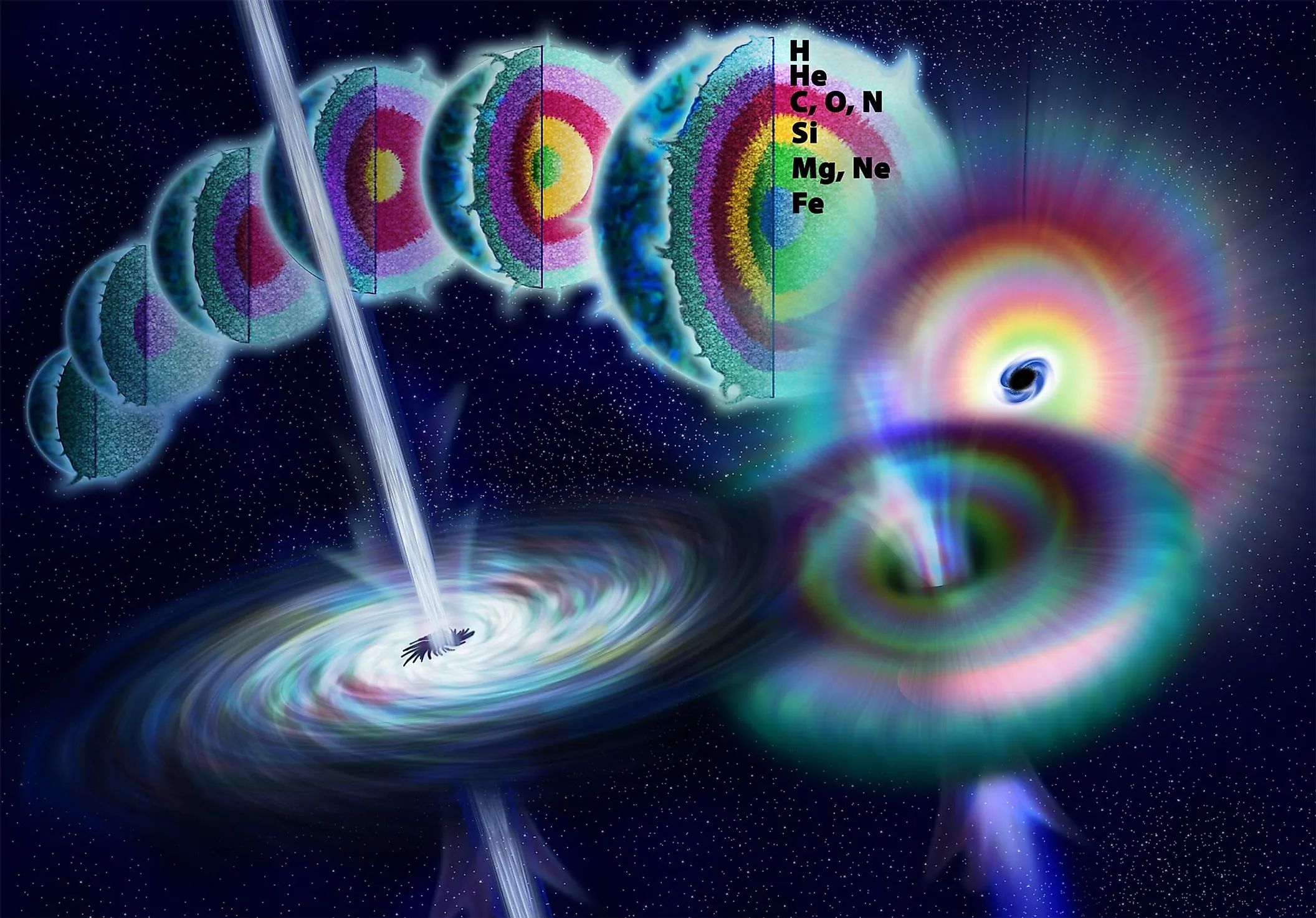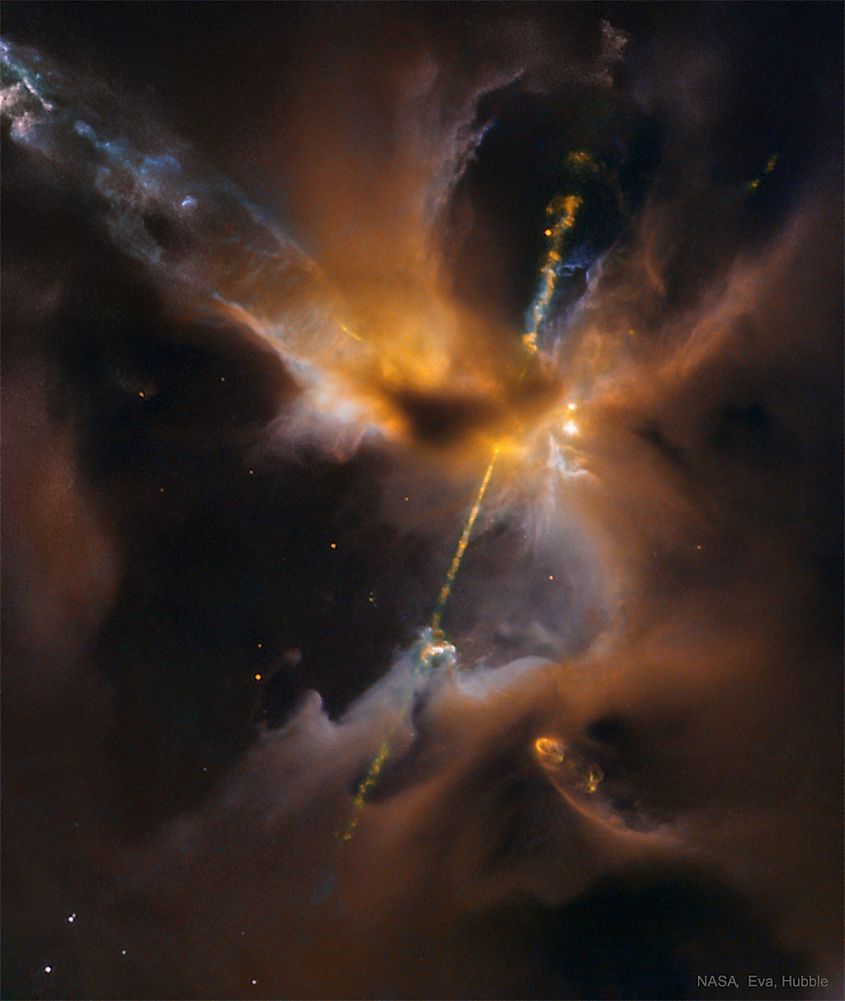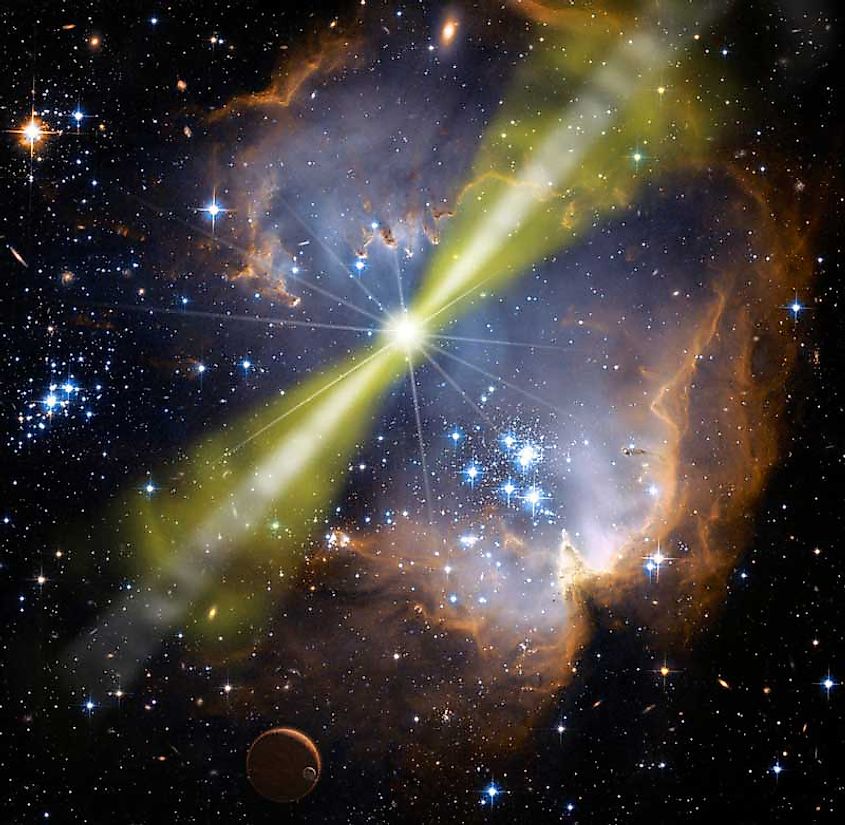
Gamma Ray Bursts
- Gamma ray burst are among the brightest, most energetic events in the universe
- Gamma ray bursts form during the death of a massive star
- The formation of a black hole leads to the formation of a gamma ray burst
The universe is a violent place. Some events are so violent and spectacular they almost defy understanding. One such event is known as a gamma ray burst. Gamma ray bursts are some of the most energetic and violent events in the cosmos. As their name suggests, they are made of gamma radiation. Gamma radiation is the most energetic form of light, possessing the shortest wavelength on the electromagnetic spectrum. When American scientists first detected gamma ray bursts in the 1960s, they thought that the Soviet Union had been testing nuclear weapons in the upper atmosphere, an act that would have violated international treaties. However, scientists soon found that the gamma radiation was coming from deep space and nowhere near our world. Their origin remained unknown for years, until scientists linked their origin to the death of a massive star and the birth of a black hole.
How Gamma Ray Bursts Form

Every star in the universe is powered by the fusion of hydrogen nuclei in their core. The energy released from nuclear fusion counteracts the inward pull of a star’s gravity, allowing the star to shine to many millions to billions of years. However, every star has a limited supply of hydrogen, and eventually, it will run out. When a star several times the mass of our sun runs out of hydrogen fuel, it collapses under its own gravity and can form a black hole. The star's immense gravity crushes it until the gravitational pull of the object becomes so strong that not even light can escape. A black hole is born, and in the process, so is a gamma ray burst. As the core of the star collapses and becomes a black hole, it begins to "eat" the rest of the star. As the material falls inward, the energy released is so immense that two beams of gamma radiation burst from the star. They can travel many light years and are so powerful and energetic that they can be seen across the universe. In ten seconds, a single gamma ray burst will emit more energy than our sun will over its 10 billion year lifetime. The only known event more energetic than a gamma ray burst is the Big Bang itself. They can outshine an entire galaxy, exceeding the light emitted by hundreds of billions of stars. In fact, a gamma ray burst seven billion light years away in 2008 was visible to the naked eye, and was even brighter than most stars in the sky.
Type Of Gamma Ray Bursts

Gamma ray bursts come in three types, each dependent upon how long the gamma ray burst lasts for. There are short gamma ray bursts, long gamma ray bursts, and ultra long gamma ray bursts. Short gamma ray bursts are defined as lasting less than two seconds. Meanwhile, long gamma ray bursts are defined as lasting longer than two seconds. Ultra long gamma ray bursts can last up to 10,000 seconds, and they are believed to form during the collapse of the largest stars.











